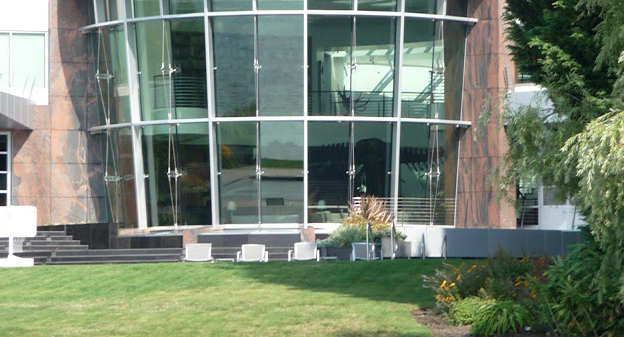

Looking for software developers and a place to put them? Why not try an area known as a bedroom community, a bit of suburbia that abuts open rural lands? It may sound silly to the people placing bets on where Amazon 2.0 will land, but that basically describes the part of King County east of Seattle before a software firm called Microsoft moved in and grew, and grew. Bellevue will never be the same, and neither will about a dozen other cities.
The wealth, diversity, and sprawl of the Eastside are easy to take for granted, now. Microsoft’s ubiquity is obvious in retrospect. It started small so the growth was easy to ignore. Microsoft grew quickly, but much more quietly than Boeing. There was no need for mile-long runways or infrastructure like railroads. A few offices became several offices became today’s massive, yet sedate office parks and campuses spread across the region.
Microsoft is known as being founded by two Seattle locals: Bill Gates and Paul Allen, but the company was officially begun in New Mexico in 1975. Their first move was to come home to Bellevue in 1979. By 1981, the company still employed fewer than 200 employees. Hardly enough people to upset any neighborhood’s growth plan. For some, though, the period set the association between Bellevue and Microsoft.
Then came the move to Redmond in 1986, a move from Bellevue’s ~80,000 people to Redmond’s ~30,000. There was undoubtedly going to be an impact, especially as the company grew. It started as six buildings on a thirty acre lot, grew to 1.7 million square-feet in 1992, added another 1.1 million square-feet in 2006, another 1.4 million square-feet in 2009, another 1.4 million square-feet in 2015, and continues with another 2.5 million square-feet in plans announced in 2017. Today’s employee count is close to the total population of Redmond thirty years ago.

The impacts are easy to see. Accommodating everyone’s commutes means massive improvements in infrastructure. Quiet roads became multi-lane highways intersecting multi-lane highways. The architectural designs are understandably modern in form and function. Microsoft is known as a place where people work hard, which may be why the campuses are ringed with apartments and condos that minimize commutes. Services sprouted in Overlake and Crossroads.
Just because the offices were in Redmond didn’t mean the employees had to live there. Some accepted the slightly longer yet relatively short commutes from Redmond’s neighbors like Kirkland and Woodinville.
Kirkland’s waterfront was an attraction. From 1980 to 1990, the population more than doubled to over 40,000. Work in Redmond, and go home to enjoy Seattle’s city lights or play by or on Lake Washington.
Head east and find Woodinville. Folks seeking a more rural setting could pick from neighborhoods that were close to ranches and farms. Wineries are certainly a draw. The then ~7,000 residents and now ~11,000 residents have seen estates established that accommodate horses and wine cellars.
As employees dispersed, it made sense to disperse the offices, too. Satellite offices were launched throughout the region. Issaquah gained a campus which gained an interstate interchange, and yet another small town becomes a city that grows to influence historic towns like North Bend and Snoqualmie, and inspire growth in places like Sammamish.

Employees didn’t just populate the Eastside, but the ones moving into Seattle were less obviously absorbed.
The storied wealth fueled architectural expressions and experiments. Bill Gates’ mansion is part of tourists’ lake side tours. As is the Windows 98 house that has 98 windows. Nathan Myhrvold’s house even has a dinosaur inside, and interesting contrast to the modern design.

The people who moved to the region to become part of Microsoft have changed the region, as well. Bellevue is the state’s largest majority minority city. The Eastside has become a mix of cultures, languages, and people that has quietly become a celebration of diversity. Not everyone in the high-tech world builds high-tech houses, but don’t be surprised to find a log cabin with state-of-the-art smarthome features.
About the only thing that stopped Microsoft’s growth was geography. Flood plains of the Snoqualmie River create a rural moat. Cross the moat and notice the land begin to rise into foothills and mountains. On flatter and drier land, the growth pattern would be different.
A recent EPA study suggests the Eastside’s growth will be through density, and the density will begin to approach Seattle’s. Yet another shift in housing and lifestyle driven by thousands of people working at rearranging electrons, the real world affected by a virtual world.
